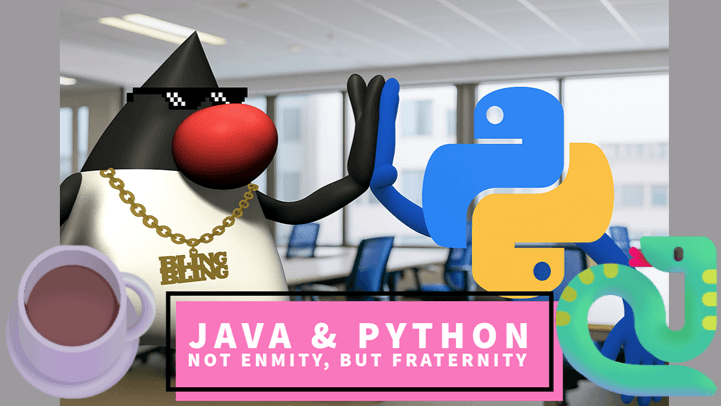
I’m working on a Data/AI team in my current engagement, and we often discuss how tech stacks should split responsibilities in AI. As a Java developer, I asked our Data folks what they think about Java’s role—and then dug deeper. Here’s how the Python/Java duo can technically drive business outcomes: a crisp business view, a step-by-step service chain (each step tagged Python/Java), and practical takeaways you can use today.
1) The business value of Java in the AI service chain 🤑
Why Java matters once models leave the lab:
- Reliability & SLAs: JVM is proven for long-running 24/7 services with tight SLOs (p95/p99 latency, availability).
- Performance at scale: JIT/HotSpot, Virtual Threads, ZGC/Shenandoah → high throughput, predictable latency, efficient concurrency.
- Operational excellence: First-class observability (Micrometer/OpenTelemetry), resilience (circuit breakers, back-pressure), and rollouts (blue-green/canary).
- Security & compliance: Strong ecosystem for authN/Z, secrets, audit trails, and supply-chain policies (Maven/Gradle, SBOM).
- Ecosystem fit: Seamless integration with Spring Boot / Quarkus / Micronaut, Kafka/Flink/Spark, relational/NoSQL stores, and Kubernetes.
- Cost control: Predictable memory/CPU behavior, autoscaling, and the option of GraalVM native-image for faster cold starts and smaller footprints.
Bottom line: Java turns ML prototypes into durable, observable, secure, and cost-effective production services.
2) The AI service chain — who does what (Python vs. Java) 🤝
A. Model creation & packaging (offline) 📦
- Data prep, feature engineering, experimentation — Python
- Training & evaluation — Python
- Export model artifact (e.g., ONNX, TF SavedModel, TorchScript) — Python
- Publish to a model registry/storage (artifact + feature contract + test vectors) — Python (with Platform support)
B. Service bootstrap (online)🚀
- Deploy service (Spring Boot or Quarkus) — Java
- App startup: load model once into an inference session
C. Request lifecycle (online inference)🔁
Clint
The API receives a request → does pre-processing → calls the inference runtime using a loaded model/session → does post-processing → returns the prediction.
- Receive HTTP/gRPC request (validation, auth) — Java (Spring Boot/Quarkus)
- Pre-processing (parse, normalize, tokenize, scale; enforce feature contract) — Java
- Call the inference runtime — Java
- Post-processing (argmax/thresholds, business rules, calibration) — Java
- Return prediction via HTTP/gRPC — Java
Vocabulary map:
- ONNX model = the portable model artifact produced by Python.
- Inference session (ONNX Runtime) = the loaded, ready-to-run model in memory.
- Predictor (DJL) = a high-level wrapper that performs inference across engines.
D. Monitoring & feedback loop 🕵️♂️
- Metrics, logs, traces, drift signals (inputs vs. training stats) — Java
- Ground-truth collection & re-training — Python
- Promotion (shadow/canary → stable) with gates on latency/error/business KPIs — Java + Platform
Typical flow (concise):
- App startup: load model once (create OrtSession or Predictor). — Java
- Each request: validate → transform to tensors → inference (session.run(...) / predictor.predict(...)) → transform output → respond. — Java
3) Takeaways 🎁
- Python (Training): data prep, experimentation, export model + feature contract + test vectors.
- Java (Serving): load model, maintain inference session, expose HTTP/gRPC, observability, autoscaling, security, cost.